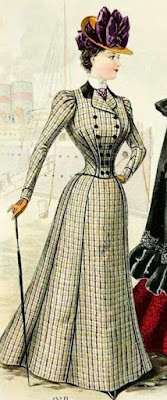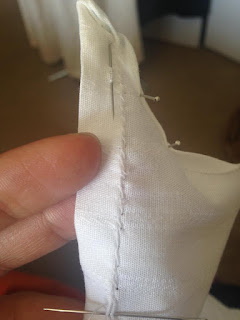Meet the Revolution!: Ona Judge revisits the Museum of the American Revolution
About a month ago, I participated in a very awesome experiment at the Museum of The American Revolution in Philadelphia. The program is called, Meet The Revolution a series featuring myself, Cheyney McKnight, and Joel Cook where we would share the experiences, opinions, traditions and the day to day lifestyles of the African-American peoples during the time of the American Revolution. Through this program we would be giving our ancestors the voices that would have otherwise been untold.

From June 18-23rd, I reprised my role as Ona Judge and would interact with the museum's visitors as well as perform my show "Freedom on The Horizon". Coincidentally my residency fell on the week of Juneteenth (which is a very important day.)
Anyway, the day would start as early as 9AM for the morning briefing with the education department on what we'd all be doing during hours of operation, where each member would be, where I would be stationed, what groups would be coming in to the museum that day, etc. Afterwards, I'd go get changed and make my way into the galleries. The cool part about that is that as an interpreter, I had the accessibility to use the first and second floors of the museum as well as Revolution Place on the ground floor.
During this experiment, I decided to conduct my own little research project: Since Ona is primarily used for stage performances, how would visitors react when she's suddenly off the stage and among the people?
To start this exercise, I came up with a scenario...since this is Philadelphia where Ona Judge lived for 3 years and was last seen, let's say Ona just ran away from the President's House on High Street (now Market), and she's wandering around the museum looking for assistance in helping her escape to New Hampshire. . .
I'd walk around the museum inconspicuously in the hopes of blending in "not to get caught by the President's guards" and randomly approach groups or individual visitors and ask them for their help in my escape in addition to engaging in casual conversation with them about Ona's history, (her life as an enslaved woman working for Mrs. Washington, what it was like living/working at the President's House, how is she going to get to Portsmouth, and what is her plan of action once she gets there.) I even used the sloop, a small ship in the museum, as part of the scenario-where I'd interact with the "captain" (played by an interpreter on the ship). While I thought it was a great idea, sadly it didn't get the response out of the visitors I was hoping for and had to make modifications to the immersion exercise.
Overall, the responses I received really gave me some insight into how to best interpret a historical person, and how to interpret living history in the near future. Through my experience with this experiment, I've learned that people respond better to a scenario setting rather than standing and waiting for them to approach. A story gets the ball rolling....
Some visitors were fascinated by seeing a person in "funny looking" clothes from the past, and openly approached me to ask questions; I found this to be very true with the school groups that visited the museum. Scores of summer camp students were at the ready with questions to ask "Ona" about her plans of escape, what life was like for a slave in Philadelphia during 1793, and what was George Washington's favorite food. One group of high school students were so excited to see someone who looked just like them that they gave me "ocean eleven style" details on how to safely leave Philadelphia by way of the Delaware River.....The immersion exercise seemed to have worked a little better than before.
It also struck me as surprising to learn how ready these kids were when it came to asking the tougher and more mature questions about slavery, that I wasn't exactly prepared to answer: case in point, how do you answer a 6 year old girl's question of why was it necessary to shackle and chain together small African children her age and younger, and load and store them into the cargo ships like boxes before they made the voyage to America? Honestly I was not at all prepared to answer a question that deep, but as an educator, I tried my best to properly give her the honest answer.
There were other visitors who were uncomfortable with me being there, which was to be expected. This museum was not like Colonial Williamsburg where you'd expect to see and interact with costumed actors on the daily (I will point out that at MoAR there are interpreters who do dress in costume during some points of the day, but do not portray a specific historical person). So it would be understandable seeing a woman who is portraying a slave (where it's not really the norm at MoAR), would be off putting and uncomfortable to the visitor. This was all too familiar to me, and I knew how to handle the situation when it called for it. If they were willing to engage with me, I'd tread lightly on the introduction before getting to the meat of the interpretation; if not, then just let them go and move on to the next visitor; while the topic of slavery is never comfortable, it's understandable to an extent... some visitors simply aren't prepared for the exposure of that malevolent part of US history.
 |
| Courtesy of Masudi Mohammud from The Museum of the American Revolution |
The stage performances were amazing! The museum gave me the space in Revolution Place to use as a venue for the play. The best part of course, was being able to perform in an actual tavern setting (since the setting of the play is in a tavern). I did not have any of my audio equipment with me, so I was a little worried about how the space would carry my voice if I projected (while the area is pretty large, there are some walls that will block the sound as well as the air conditioning). I also had the pleasure of getting a brand new and authentic runaway advertisement (thanks to their graphics department). There were times however where things did not run as smoothly and I would have to improvise, but other than that each performance was perfect and well received by the audience, who were ready with really amazing questions. One Q&A segment turned into a 20 min open floor discussion (That blew me away and I loved every moment of it! )
The best parts of my residency and honestly, my whole week, was being visited by my friends and family who came all the way up from Virginia, Maryland, and New Jersey in support. If you're reading this, thank you SO much! I enjoyed my time with you, and your surprise visits really meant the whole world to me and made me feel more at home.
 |
| Courtesy of Masudi Mohammud from The Museum of the American Revolution |
More photos in my flikr page below

.jpg)


Comments
Post a Comment